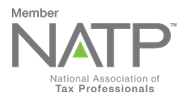
One of the ways American business changed with the coronavirus is that thousands—if not millions—of employees are now working from home. The good news is that they’re getting the job done while practicing social distancing.
The bad news may be that both workers and employers might be a little closer to state and local tax measures than they thought.
Nexus and Other Minefields
Jared Walczak of the The Tax Foundation, one of the nation’s leading tax policy institutions, points up the risks some businesses may run in having a home-bound workforce. Most businesses, they say, are cautious about offering a work-at-home arrangement as an option simply because it may expose them to taxation in states where they might otherwise have too few contacts to be taxable. The technical term for this is “nexus.”
The coronavirus pandemic, of course, changed all that, making work-at-home the option of choice for many companies.
Nexus is a way of telling whether a business has enough presence in a state to pay state tax on its activities. Another yardstick—apportionment—lays out the division of the income to yield the appropriate share for a given state to tax. These two terms, Walczac writes, form the yardstick by which companies are measured by states.
“Without some standards for nexus and apportionment, there would be nothing to prevent states from taxing businesses that have no connection to that state, or from taxing the entirety of a business’s income even though it is also taxed in other states on much or all of that income as well,” Walczak states.
Federal law says states can’t use nexus against a corporation just because it solicits sales there. There has to be some kind of additional activity—such as having property in the state, or having employees working there. Many companies meet these requirements in most or all states—up to now, anyway.
The difference between nexus or no nexus can be tenuous. Walczak writes that even a single employee working from home in a state where the company lacked nexus before can be enough to qualify the company as taxable there.
Apportionment can push a company farther over the state’s line. Traditional apportionment takes payroll, property, and sales into account. While many states now use a single sales factor apportionment, if a state does still use three-factor apportionment where the amount of payroll in a state helps determine how much income is taxable, any employees working from home can increase apportionment.
Even in states that use the single sales factor method, working at home can make a big difference. Walczak uses the example of a company with extensive sales in a state, but doesn’t have nexus since it doesn’t have a sales team there, doesn’t service its goods there and ships into the state using freight lines instead of their own trucks.
“That company has no corporate income tax liability in the state into which it is selling—but suddenly, if even one employee is working remotely there, the state could begin taxing them, taking all of those sales into account in determining the share of net income to tax,” Walczak writes.
Withholding Nightmare
Typically, employers withhold for the state in which the work is performed, even if the employee lives in another state. The employee gets to take a credit against income taxes paid in the jurisdiction in which they worked against their tax liability where they reside.
Enter the work-at-home response to the coronavirus.
Now many of these employees live and work in the same state, and it’s not the state where the company has offices. Their company should now start withholding in the state where the employees work, even if it’s just temporary. This can be a costly compliance measure for businesses not already accustomed to having a workforce spread out over many states.
The situation, Walczak writes, only gets more complex when, because of the pandemic, an employee moves in with relatives due to comfort, convenience, or necessity. If that move entails travel to another state, it can introduce yet another wrinkle to the withholding tapestry.
The Tax Foundation suggests a couple of remedies for the hornets’ nest these conditions might create.
First, Walczak says states could disregard telework when it comes to figuring nexus and apportionment for the duration of the pandemic. Congress, he adds, also should consider a temporary nationwide provision that deems such telework to take place at an employee’s normal place of work for nexus and apportionment purposes.
Walczak’s conclusion says it best:
“During the present crisis, remote work has become a necessity for many people. The tax implications, however, are very real and potentially quite complex. States and the federal government have a role here in eliminating needless complexity and would do well to treat temporary pandemic-related telework as if the employee’s place of business had not changed.”
Our thanks to Jared Walczak and the Tax Foundation. For the complete article, check out the Tax Foundation website.




